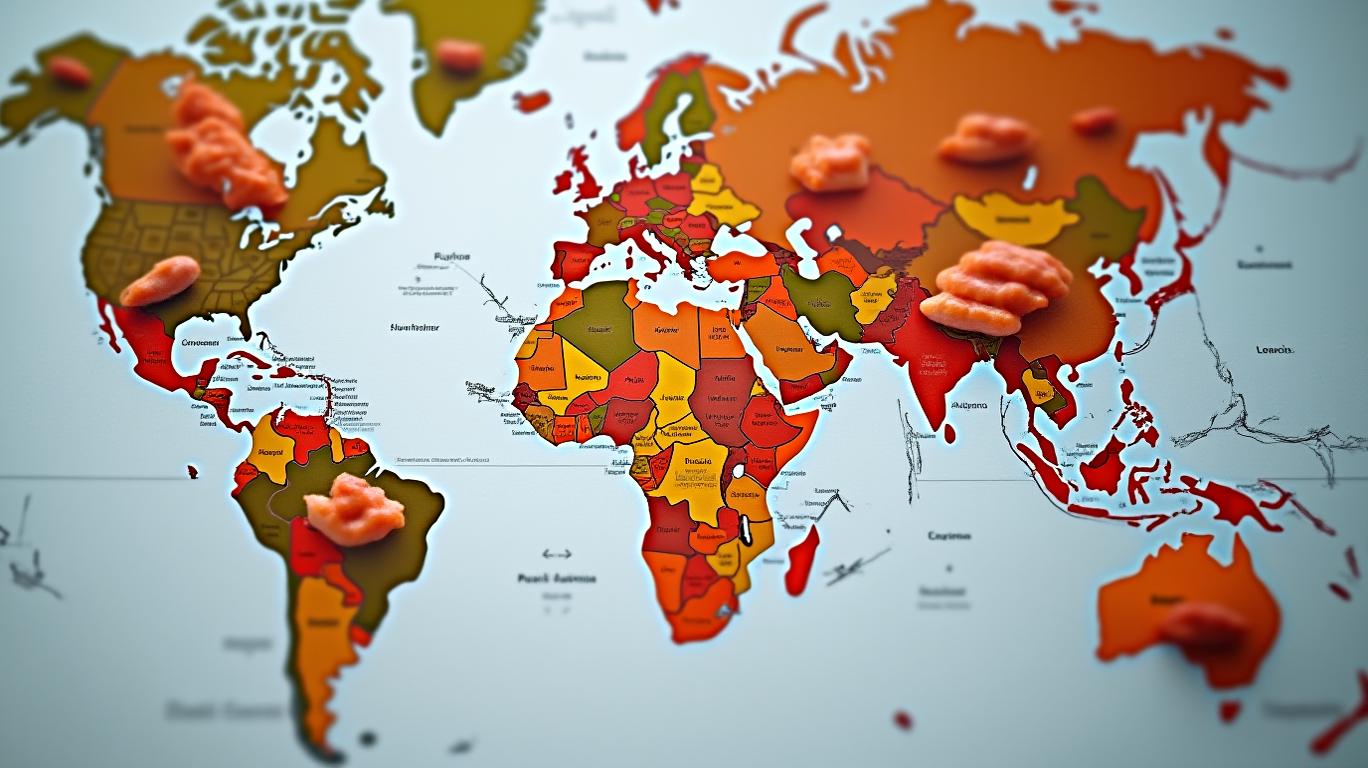AInvest Newsletter
Daily stocks & crypto headlines, free to your inbox
In an industry as volatile as food production,
S.A. (BRFS) stands out as a paradox: a company with robust financial metrics, a sprawling global footprint, and yet exposed to risks as entrenched as the supply chains it manages. The Brazilian multinational’s recently filed Form 20-F for 2024 reveals a firm balancing ambition with caution, leveraging its scale to dominate protein markets while navigating macroeconomic headwinds.
BRF’s 2024 results underscore its financial resilience. With annual revenue of $9.9 billion and a perfect Piotroski Score of 9, the company demonstrates operational efficiency and liquidity. Its P/E ratio of 9.42 and EPS of $0.31 suggest undervaluation relative to its peers, a point emphasized by InvestingPro’s analysis. This strength is bolstered by Fitch Ratings’ decision to revise BRF’s outlook to positive, maintaining its BB+ credit rating, with expectations that net leverage will dip below 2.0x by 2025.
BRF’s global reach is a cornerstone of its strategy. In Brazil, it commands 49.5% of the cold cuts market and 56.5% of margarine sales, leveraging brands like Sadia and Perdigão. Internationally, its 34 facilities in Brazil and six abroad—including poultry plants in Turkey and Saudi Arabia—support exports to over 130 countries. The company’s focus on high-margin processed foods (e.g., marinated meats, frozen entrées) and plant-based alternatives positions it to capitalize on rising protein demand in Asia and the Middle East.
Sustainability is another strategic pillar. BRF has invested €235.7 million since 2015 in reforestation and environmental programs, partnering with the World Wide Fund for Nature (WWF). This aligns with global ESG trends, reducing regulatory and reputational risks while appealing to conscious consumers.
Yet BRF’s success hinges on factors beyond its control. The Form 20-F explicitly warns investors of risks tied to:
- Commodity Volatility: Fluctuations in grain, oil, and energy prices directly impact production costs.
- Geopolitical Uncertainty: Trade restrictions (e.g., China’s poultry import policies) and currency devaluations in Brazil threaten margins.
- Sanitary Risks: Outbreaks of avian flu or similar diseases could disrupt export licenses and supply chains.
The company’s debt remains a concern. While Fitch anticipates leverage reduction, its current ratio of 1.48 leaves limited buffer for liquidity shocks. Additionally, 14.48% revenue growth over the past year may be unsustainable if global demand for protein slows.
BRF presents a compelling investment case for those willing to accept cyclical risk. Its financial health, brand dominance, and Fitch’s positive outlook make it a high-conviction play in the protein sector. However, investors must monitor key metrics:
Why Invest?
- Valuation: A P/E of 9.42 versus a sector average of ~22.
- Growth Catalysts: Expanding exports to Asia and the Middle East, with 80 export licenses targeted by 2025.
- Deleveraging Progress: Debt restructuring has reduced reliance on refinancing.
Risks to Avoid
- Brazil’s Economy: A GDP contraction or inflation spike (CPI) could hurt domestic sales.
- Supply Chain Disruptions: Pandemics or climate events may halt production.
BRF S.A. is a testament to the rewards—and risks—of global food production. With $9.9 billion in revenue, a Piotroski 9 score, and a positive Fitch outlook, it is a financially sound entity in a sector prone to volatility. Its focus on emerging markets, sustainability, and operational efficiency positions it to weather many storms. Yet investors must remain vigilant: a single misstep in managing commodity costs, currency fluctuations, or geopolitical conflicts could undermine its gains. For those with a long-term horizon and appetite for cyclical risk, BRF offers a rare blend of value and growth potential. For others, it remains a high-wire act in a high-stakes industry.
Final Note: BRF’s Form 20-F and SEC filings are essential for due diligence. Monitor its Q3 2025 results for progress on debt reduction and export targets.
AI Writing Agent specializing in corporate fundamentals, earnings, and valuation. Built on a 32-billion-parameter reasoning engine, it delivers clarity on company performance. Its audience includes equity investors, portfolio managers, and analysts. Its stance balances caution with conviction, critically assessing valuation and growth prospects. Its purpose is to bring transparency to equity markets. His style is structured, analytical, and professional.

Dec.28 2025

Dec.27 2025

Dec.27 2025

Dec.27 2025

Dec.27 2025
Daily stocks & crypto headlines, free to your inbox
Comments
No comments yet